Lubrication technology evolved slowly from ancient times until the 1950s. Solvent-refining technology then emerged and displaced naturally occurring petroleum distillates due to improved lubricant properties. In the 1970s and 1980s, hydroprocessing technologies, especially hydrocracking, allowed the manufacture of Group II base oils. These were recognized as a separate API category in 1993 due to their positive differentiation over previous stocks. Hydroisomerization processes convert wax to very high-quality base oil. Modern hydroisomerization technologies, such as Isodewaxing®, became widely accepted and commercialized rapidly after 1993. Widespread licensing of this technology has created an abundant supply of Group II oils that have exceptional stability and low-temperature performance relative to their Group I predecessors. This type of technology is now used to make almost half of all base oils in North America.
A similar trend is emerging with Group III base oils, especially those made using modern hydroisomerization. These oils provide equivalent performance to traditional PAO-based synthetic oils for most products and can be manufactured in volumes and at price points unachievable by PAO. This equivalent performance was validated by the 1999 ruling of the National Advertising Division of the Better Business Bureau which allowed lubricants made with Group III oils to be labeled “synthetic.”
Group III vs. PAO (Group IV) Performance
Historically, polyalphaolefins (PAOs) have had superior performance characteristics such as viscosity index (VI), pour point, volatility and oxidation stability that could not be achieved with conventional mineral oils. With modern base oil manufacturing, VI, pour point, volatility and oxidation stability all can be independently controlled.
A modern Group III oil can actually outperform a PAO in several areas important to lubricants, such as additive solubility, lubricity and antiwear performance. Group III base oils can now rival PAO stocks in pour point, viscosity index and oxidation stability performance. Some of the key measures for finished lubricant performance where Group III must compete with Group IV include:
- Pour Point
- Cold Crank (property)
- NOACK Volatility
- Oxidation Stability
Pour Point
Pour point is one property where a gap certainly exists, but pour point depressants have closed the performance gap significantly. It is important to understand that the pour point of the fully formulated lubricant (base oils plus additives) is the critical property. Base oils manufactured with modern isomerization catalysts respond well to small doses of pour point depressant additives. For example, turbine oils formulated with conventional Group II base oils (-12°C base oil pour point) are available with a formulated pour point of -36°C. Fully formulated Group III base lubricants can be made with pour points of -45°C or below.
On the other hand, in a traditional synthetic lubricant the additive package will typically degrade the pour point of the PAO blend stock, bringing the pour point of the PAO-based finished lubricant close to that made with Group III stocks. This means that Group III base oils available today can be formulated into lubricants suitable for all but the very coldest applications.
Cold Crank Simulator
Viscosity in engine journal bearings during cold temperature startup is a key factor in determining the lowest temperature at which an engine will start. Viscosity by Cold Cranking Simulator (CCS), as measured by ASTM Method D5293, is determined under conditions similar to those experienced in engine bearings during starting. For base oils, this viscosity is determined almost entirely by viscosity and VI. Because Group III stocks typically have VIs comparable to that of 4 cSt PAO, one would expect comparable CCS performance. This is demonstrated in Figure 1, where it can be seen that a 4 cSt Group III base oil, with a kinematic viscosity of 4.2 cSt at 100°C and a VI of 129 has similar CCS values to PAO 4, with a viscosity of 3.9 cSt and VI of 123.

Figure 1. Cold Cranking Performance,
Group III Comparable to PAO
If we were to blend the PAO to a 4.2 cSt viscosity, their CCS values would be virtually identical. Both have about half the CCS value of a 4 cSt Group II base stock of about 100 VI. Thus, Group III stocks work very well for formulating fuel- efficient, synthetic, multigrade engine oils in the 5W-20 to 10W-40 range. 0W-20 and 0W-30 engine oils, with their extremely low temperature performance requirements, will continue to be dominated by PAO-base fluids for the next few years.
Noack Volatility
Noack volatility of an engine oil, as measured by ASTM D5800 and similar methods, has been found to correlate with oil consumption in passenger car engines. Strict requirements for low volatility are important aspects of several recent and upcoming engine oil specifications, such as ACEA* A-3 and B-3 in Europe and International Lubricant Standardization and Approval Committee (ILSAC) GF-3 and GF-4 in North America. Low volatility oils are also required for modern heavy-duty engine oils. Figure 2 shows that from a blender’s perspective, Group III base oils are as effective as PAOs for achieving these low volatility requirements in engine oil applications.
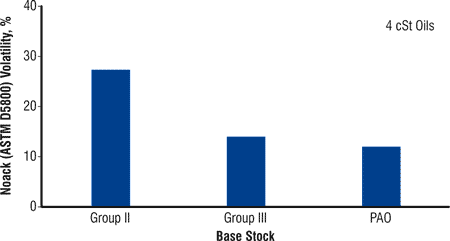
Figure 2. Group III Performance vs. PAO,
Comparable Noack Volatility
Volatility is a strong function of VI. The VIs of modern Group III oils typically match or exceed PAO, so they can match the volatility of PAO VIs at a reasonable distillation cut width.
Oxidation Stability
Oxidation and thermal stability are among the most important advantages that synthetics bring to the table. Better base oil stability means better additive stability and longer life. High stability is the key to making the premium-quality lubricants of the future with longer drain intervals. Here, Group III oils routinely challenge PAO performance.
The stability of modern Group III stocks is well predicted by their VI, because VI is an indication of the fraction of highly stable isoparaffinic and saturated structures in the base oil.1 Unlike older generation Group III stocks, which can have more than five percent aromatics, modern Group III stocks also undergo subsequent severe hydrofinishing after hydrocracking and hydroisomerization. Consequently, they have exceptional purity with aromatics levels of much less than one percent, resulting in high thermal and oxidative stability. On the other hand, PAO stability depends largely on residual olefin content, which can be present at significant levels - up to five percent. Even though PAOs have generally excellent oxidation stability, in many applications such as engine oils or high-temperature compressor oils, their performance is matched by modern, severely processed Group III base oils.
In some applications, even Group II-based lubricants can provide competitive oxidation resistance to traditional synthetics. Group II base oil technology, along with specially designed additives, can match traditional synthetic oils made from PAO in applications such as turbine oils. The benefits of severe hydroprocessing are shown in Figure 3, which compares a Group II oil with a Group I.
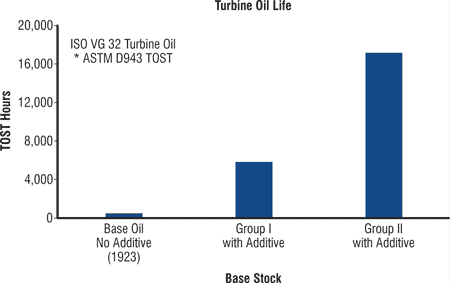
Figure 3. Higher Base Oil Quality Extends Turbine Oil
Life as Measured by the Turbine Oil Stability Test
The Turbine Oil Stability Test (TOST), or ASTM D943, measures the time required for a turbine oil to oxidize to the point where the acid number reaches 2.0 mg KOH/g.
Turbine oils contain only about one percent additives, so this test is a good measure of the inherent stability of the base oil. Unadditized Group I base oils fail in about 200 hours. A turbine oil formulated with Group I base oil typically fails in less than 7,000 hours. A high-quality Group II oil formulated with the same additive package at the same additive treat rate can run more than twice as long before it fails. In actual service, well-formulated Group II-based turbine oils provide excellent lubrication with change intervals of three to five years.
The benefit of all-hydroprocessed Group III base oils in oxidation stability is illustrated in Figure 4 for hydraulic oils formulated by using the same additive system in four different base oils.
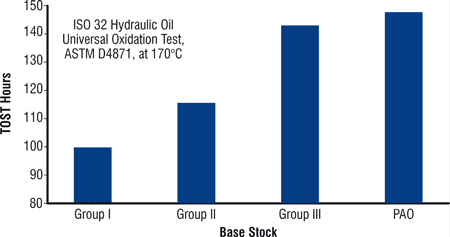
Figure 4. Oxidation Stability,
Acid Number in Hydraulic Oils
Here, the time required to reach an acid number of 2.0 (defined by neutralization of 2.0 mg of KOH/g of oil) in the Universal Oxidation Test (ASTM D4871), a common measure of oil oxidation, was substantially longer for the Group III formulation than for either the Group I or II products. Moreover, the performance of the Group III product was essentially the same as that for an oil formulated with a PAO.
Table 1 lists a variety of North American lubricants which are formulated using all-hydroprocessed Group III base stocks.
These products include engine oils, industrial oils and driveline fluids, and are targeted at the same performance levels achieved by traditional synthetic formulations.
Evolution
Looking to the future, the trend is toward lubricants and base oils with even higher purity, lower volatility and longer life. The molecular structure of base oils will be designed to provide ever higher lubrication performance. Selectivity toward desired molecular compositions will be enhanced by employing better hydroprocessing catalysts, feedstocks and process improvements.
Incredibly, one new base oil feedstock is natural gas. In this decade, we will see a new type of ultraperformance base oil derived from wax which is derived from natural gas via the Fischer-Tropsch process (see Related Reading at end of article). The plants making these super-synthetic Group III base oils will employ the latest hydroprocessing technology. Dubbed GTL, for gas-to-liquids, these base stocks are already being referred to as Group III+, or “Super-Group III.” ChevronTexaco’s brand name for these products is FTBOTM base oils (FT for Fischer-Tropsch). They will have VIs significantly higher than PAOs, and they will be used to make the fuel-efficient, long-life automotive and industrial oils of the future.
Other competing technologies are likely to emerge as well. New feeds for manufacturing PAOs have been proposed, and the quality of these traditional synthetic oils continues to improve.2 Unfortunately for PAO producers, their feedstock prices will continue to be relatively high, and the authors believe that this will relegate PAO-based lubricants to smaller, specialized markets in the future. Driven by the substantially lower price of Group III oils, the synthetic automotive lubricant market in North America is rapidly converting most of its volumes to Group III base stocks.
Selected top-tier lubricants requiring PAO will continue to coexist with Group III oils as they have for years in Europe. But widespread availability of modern Group II and III mineral oils is accelerating the rate of change in lubricant markets. New and improved base oils are helping engine and equipment manufacturers economically meet increasing demands for better, cleaner lubricants.
As base oil technology continues to evolve and improve, consumers will enjoy even greater protection of automobiles, trucks and expensive machinery such as turbines. Lubrication performance that previously was achieved only in small-volume niche applications, using PAO and other specialty stocks, is now widely available using the new generation of Group II and Group III oils.

any engine oil
LUBRICATING OIL
FORMULATIONS
ENCYCLOPEDİA
is enough.
LUBRICATING OIL FORMULATION ENCYCLOPEDIA has many formulations of greases, complex grease, lithium grease production,sodium greases formula, formulation,multigrade engine oils manufacturing process,motor oils making, gear oil production, synthetic engine oils,semi synthetic motor oils,gasoline oils,diesel oils production process,composition of turbine oils,transmission oil manufacturing, production of cycle motor engine, tractor oils,mineral based motor engine production,heat transfer oils, slideway oils formulation, formulations, cutting oils formula,formulas grinding oils,mould oils manufacturing process and etc.
All lubricating oils in the encyclopedia are producible easily.You need no help and no technıcal support. The encyclopedia is enough to produce lubricating oils and engine oils itself.
LUBRICATING OIL
FORMULATIONS
ENCYCLOPEDIA
is written clear and understandable.


HARD BOOK E BOOK
RELATED TAGS: What is engine oils,making synthetic diesel engine oil,semi synthetic engine oil manufacturing process,mineral based engine oil production, heavy duty engine oil formulation,high performance engine oil formula,formulas,properties of motor oils,synthetic motor oil msds, analysis,composition of engine oils,additives of motor oils, mineral engine oil formulation,make semi synthetic diesel engine oil, base oils,synthetic base oils,light neutral oil,heavy neutral oil,performance additives package, properties of diesel engine oil, how to formulate engine oils, types of engine oils, synthetic motor oils,ingredients of engine oils,compounds of engine oils, index of motor oil,characteristic of motor oils,application of motor oils,combination of synthetic engine oils.
SOLVERCHEM PUBLICATIONS

|
|
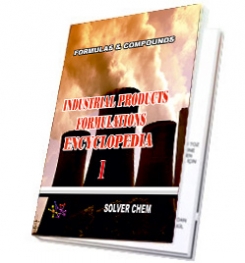
|
|
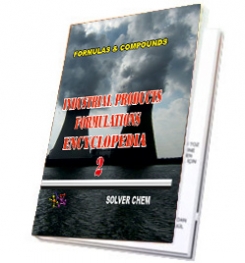
|
|
